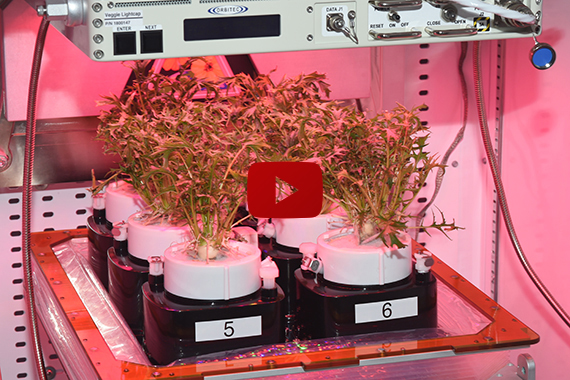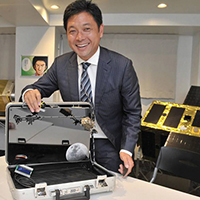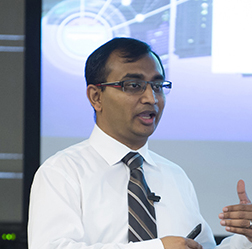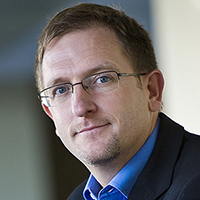 Krannert alumnus David Kusuma, vice president of research and innovation at Tupperware, is part of a team working with the Kennedy Space Center to improve its "Veggie" system on the International Space Station. (Photo provided by Tupperware)
Krannert alumnus David Kusuma, vice president of research and innovation at Tupperware, is part of a team working with the Kennedy Space Center to improve its "Veggie" system on the International Space Station. (Photo provided by Tupperware)
Planting the Seeds of Exploration
Giant Leaps in Space
Purdue alumni Scott Tingle and Drew Feustel both completed stints on board the International Space Station in 2018. They and other NASA astronauts know firsthand that the nutritional boost of fresh food and the psychological benefits of growing plants become more vital with each mission beyond Earth.
Under the direction of researchers at Kennedy Space Center, astronauts at the space station have been growing a variety of leafy vegetables to supplement their diets since 2015 with the Vegetable Production System, known as Veggie. Keeping the plants properly watered has been a challenge, however. In 2017 the agency turned to a team at Tupperware Brands, led by Krannert alumnus David Kusuma, to help design a new approach.
 Kusuma, a 2002 graduate of Purdue’s IMM Global Executive MBA program, serves as vice president of research and innovation at the iconic manufacturer, whose airtight plastic containers are synonymous with keeping food fresh. Working closely with Kennedy Space Center and Techshot, a private spaceflight services firm, Tupperware began exploring possible enhancements to the so-called “plant pillows” component of Veggie, which holds the root structure of plants.
Kusuma, a 2002 graduate of Purdue’s IMM Global Executive MBA program, serves as vice president of research and innovation at the iconic manufacturer, whose airtight plastic containers are synonymous with keeping food fresh. Working closely with Kennedy Space Center and Techshot, a private spaceflight services firm, Tupperware began exploring possible enhancements to the so-called “plant pillows” component of Veggie, which holds the root structure of plants.
Using the original system designed by a NASA research scientist, astronauts had to push water into each plant pillow with a syringe. As a result, some crops fared better than others because not all the plants received equal amounts of water and oxygen.
“Tupperware has a wealth of knowledge and longstanding success in plastics manufacturing and injection molding, but we actually had a lot to learn about making it work in space,” Kusuma says. “Aside from consolidating the component parts, there were issues with fluid dynamics, opacity, and unusual internal geometries to replace gravity that we couldn’t have addressed without support from our partners; so it’s been a team effort.”
The new technology, dubbed the Passive Orbital Nutrient Delivery System (PONDS), is designed to provide plants grown in space a growing environment functionally almost equivalent to that of their terrestrial counterparts. The system uses absorbent mats that leverage the basic principles of surface tension and capillary action to wick water to seeds and roots through a reservoir system.
According to NASA, this approach passively disperses water evenly through each plant cylinder contained within the PONDS’ reservoirs, facilitating consistent seed germination and plant development with less crew maintenance.
The first seven PONDS modules arrived at the space station via the commercial SpaceX CRS-14 cargo capsule in April, while Tingle was completing his recent mission. It included three variations of a common design used to cultivate red romaine lettuce, which is one of the same food sources previously grown in the Veggie facility.
Additional modules planned for launch over the next months will provide a validation of the device’s performance in advance of its use in a comprehensive research campaign by NASA scientists beginning in November 2018.
“Tupperware products have included smart technology features for nearly 70 years,” Kusuma says. “Our product evolution goals have always been to meet today’s needs, and we are proud to say that this now includes sustainable vegetation growth in space. Working alongside NASA and Techshot on the advancement and success of the PONDS project has been one of our most exciting and unique collaborations.”






